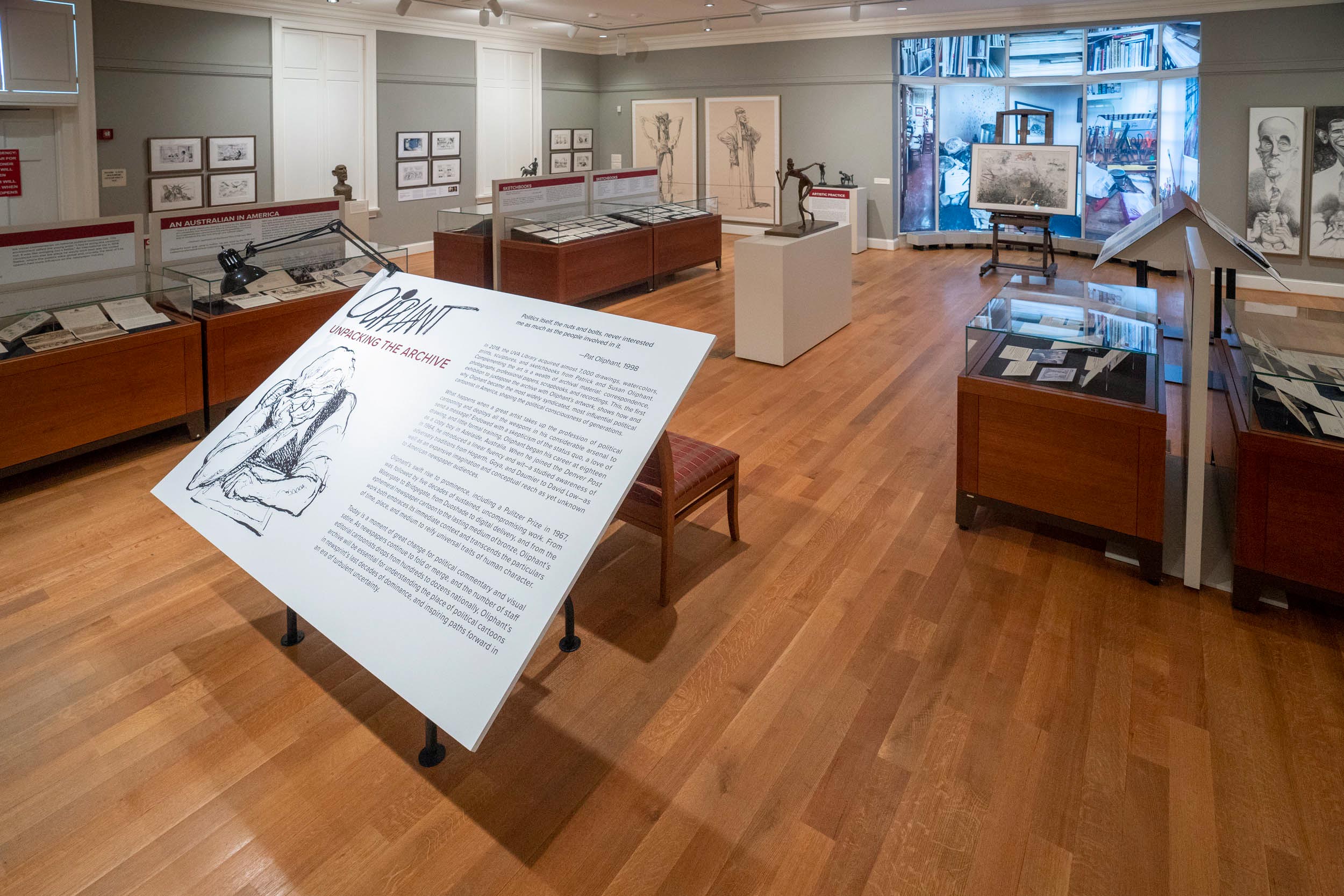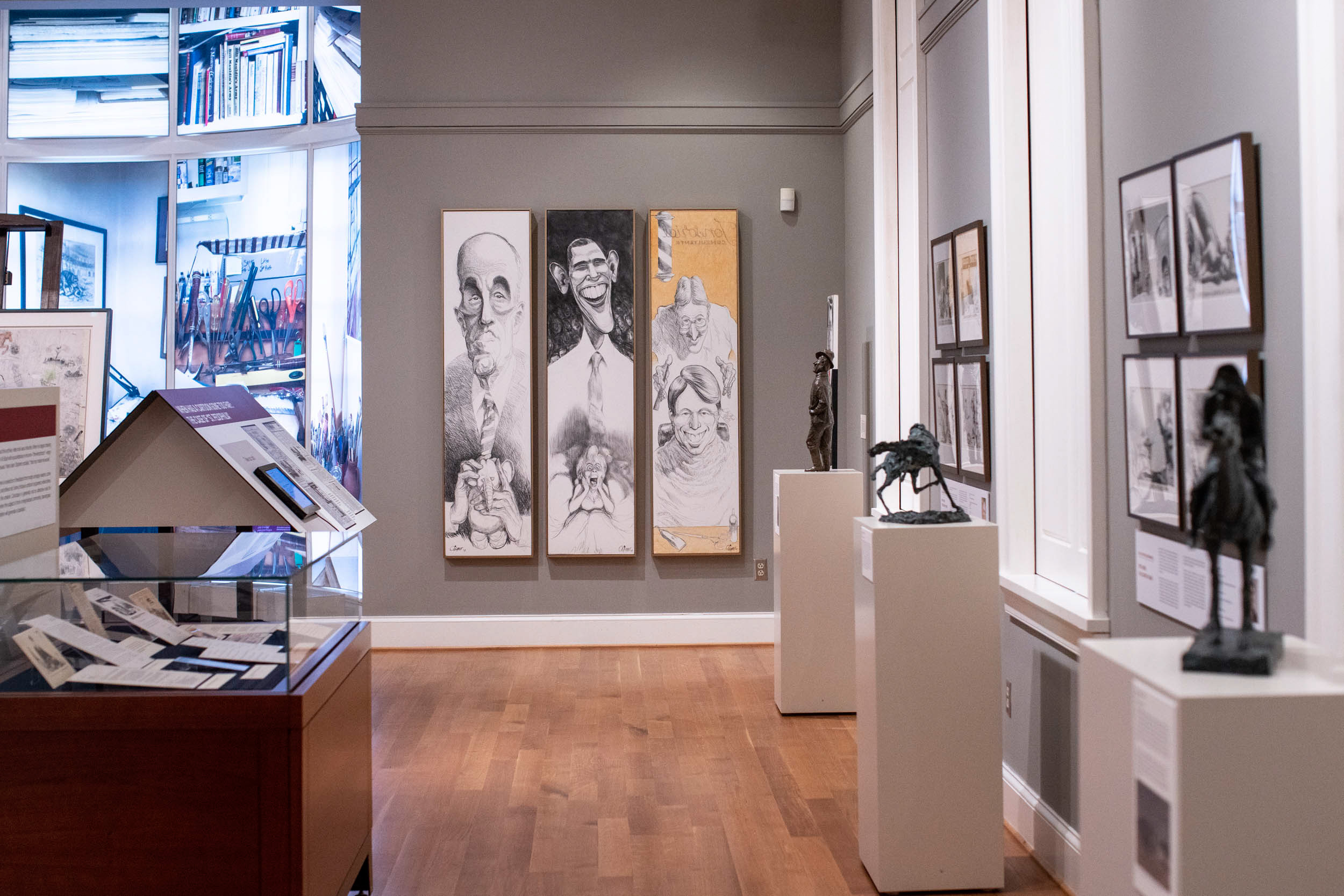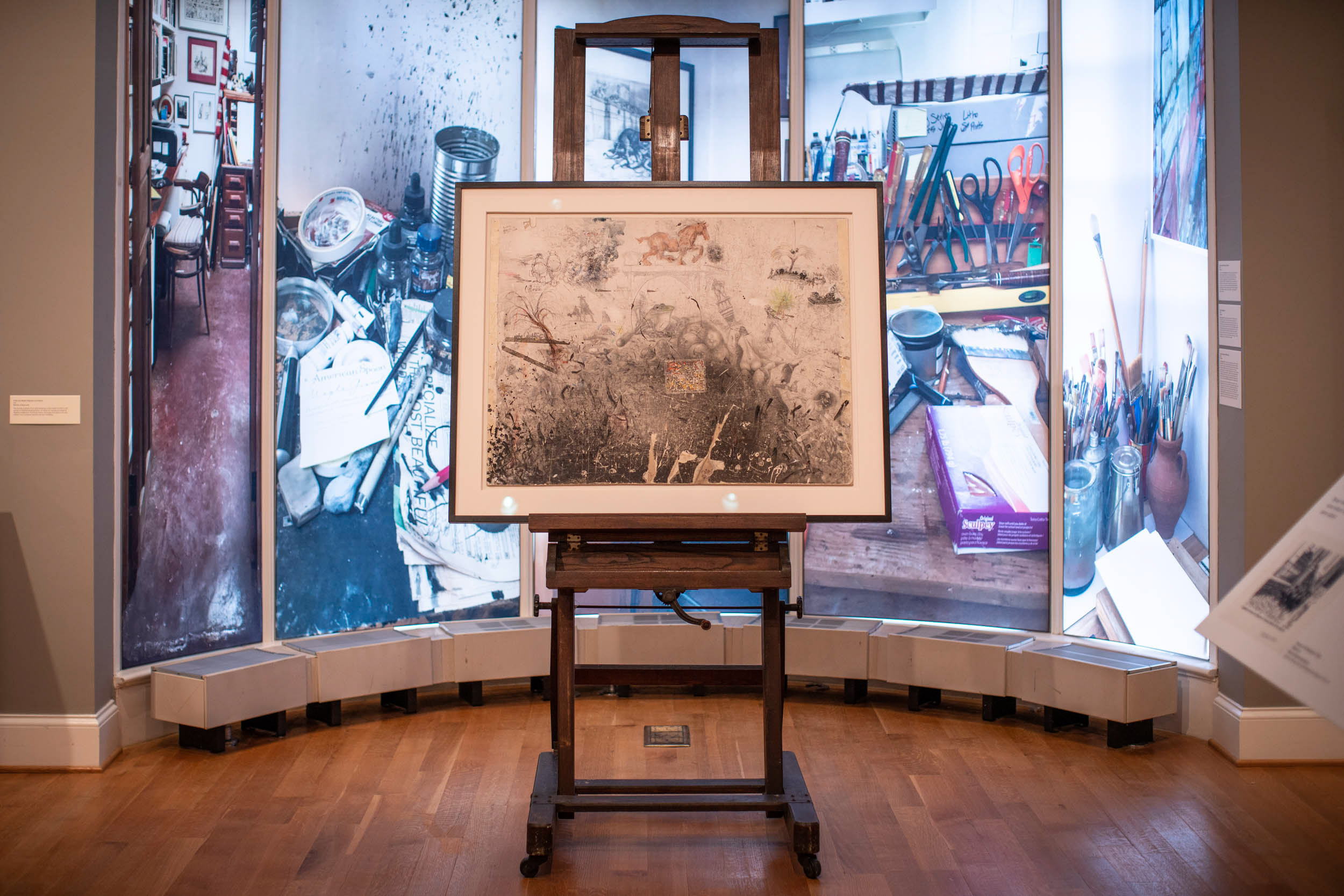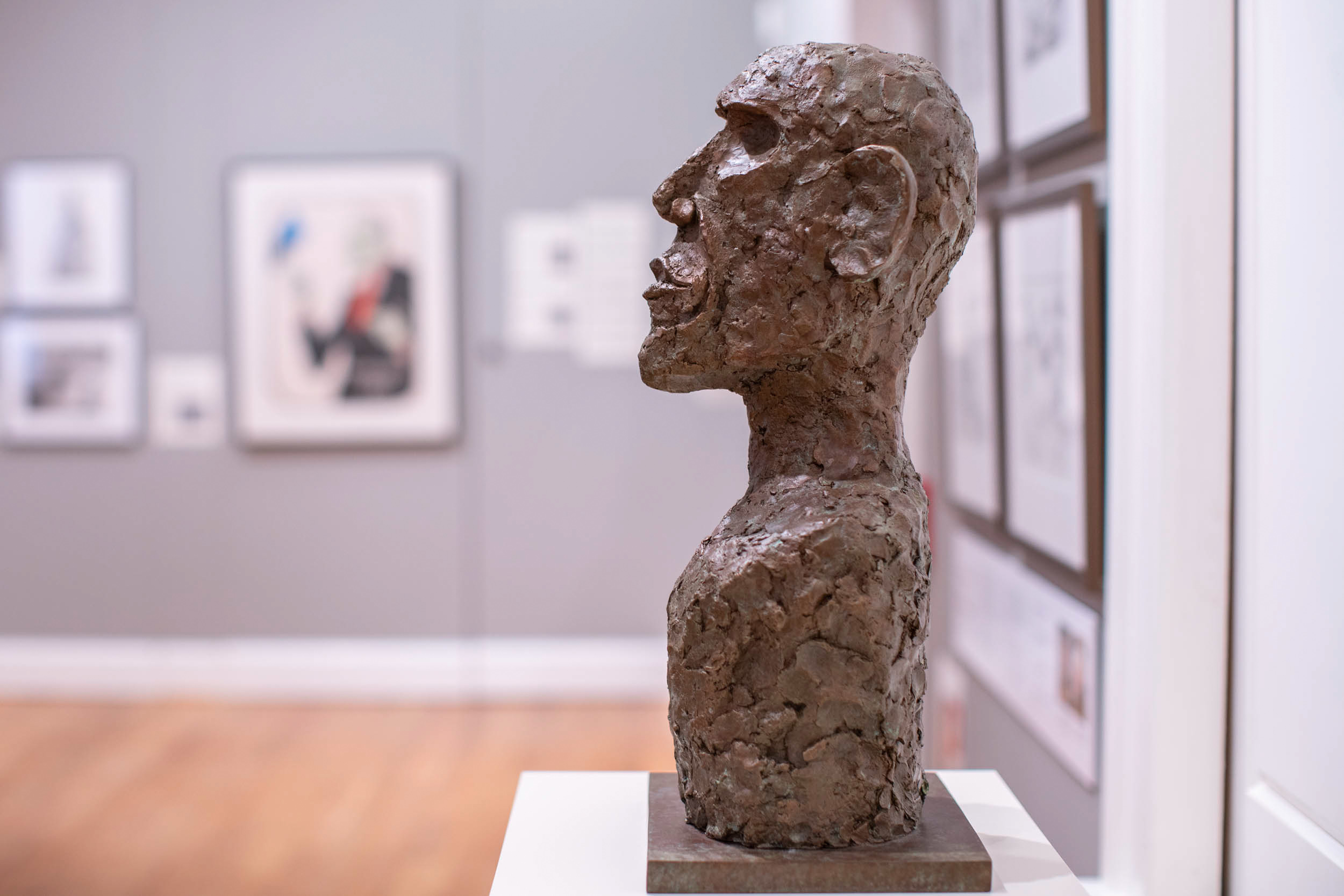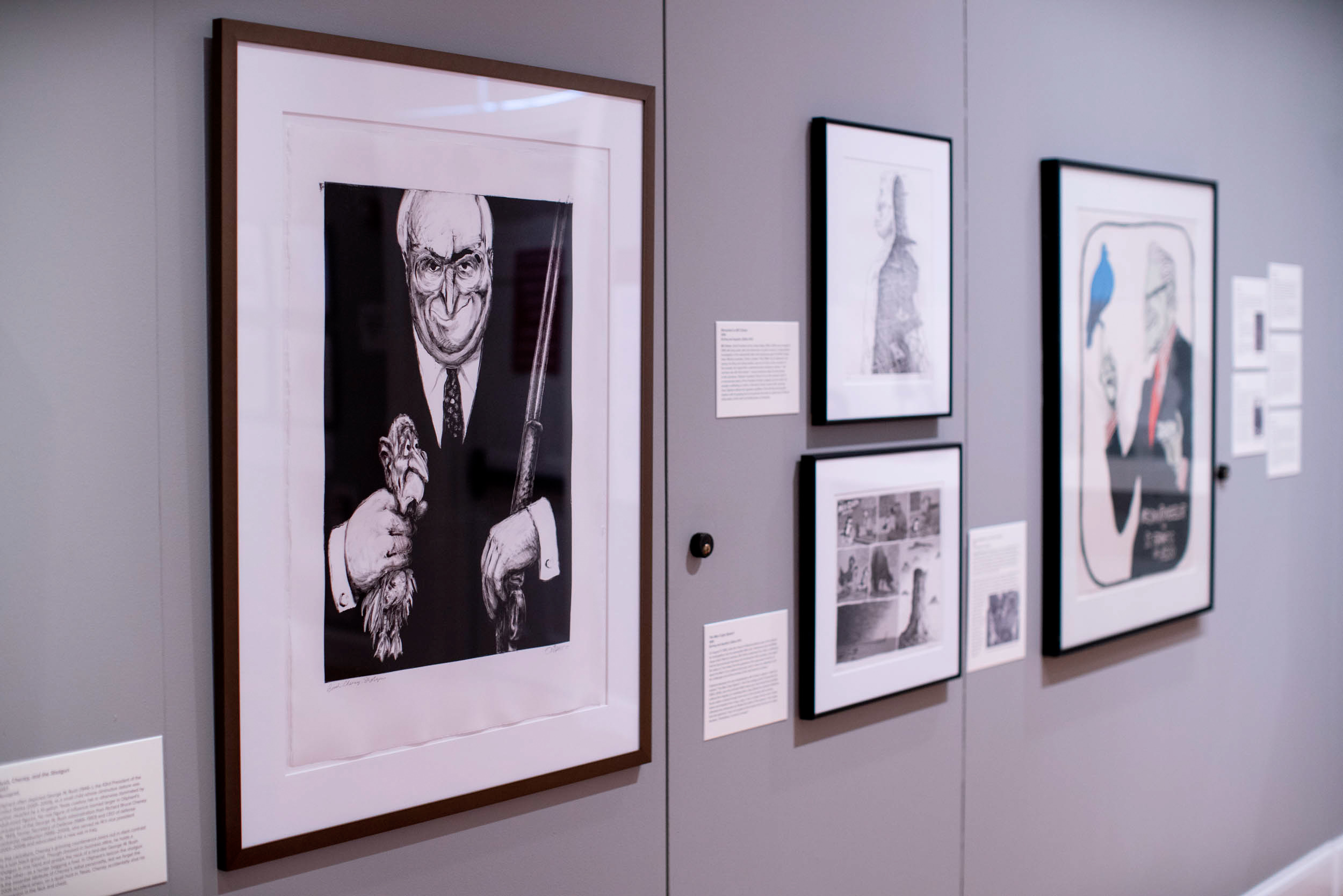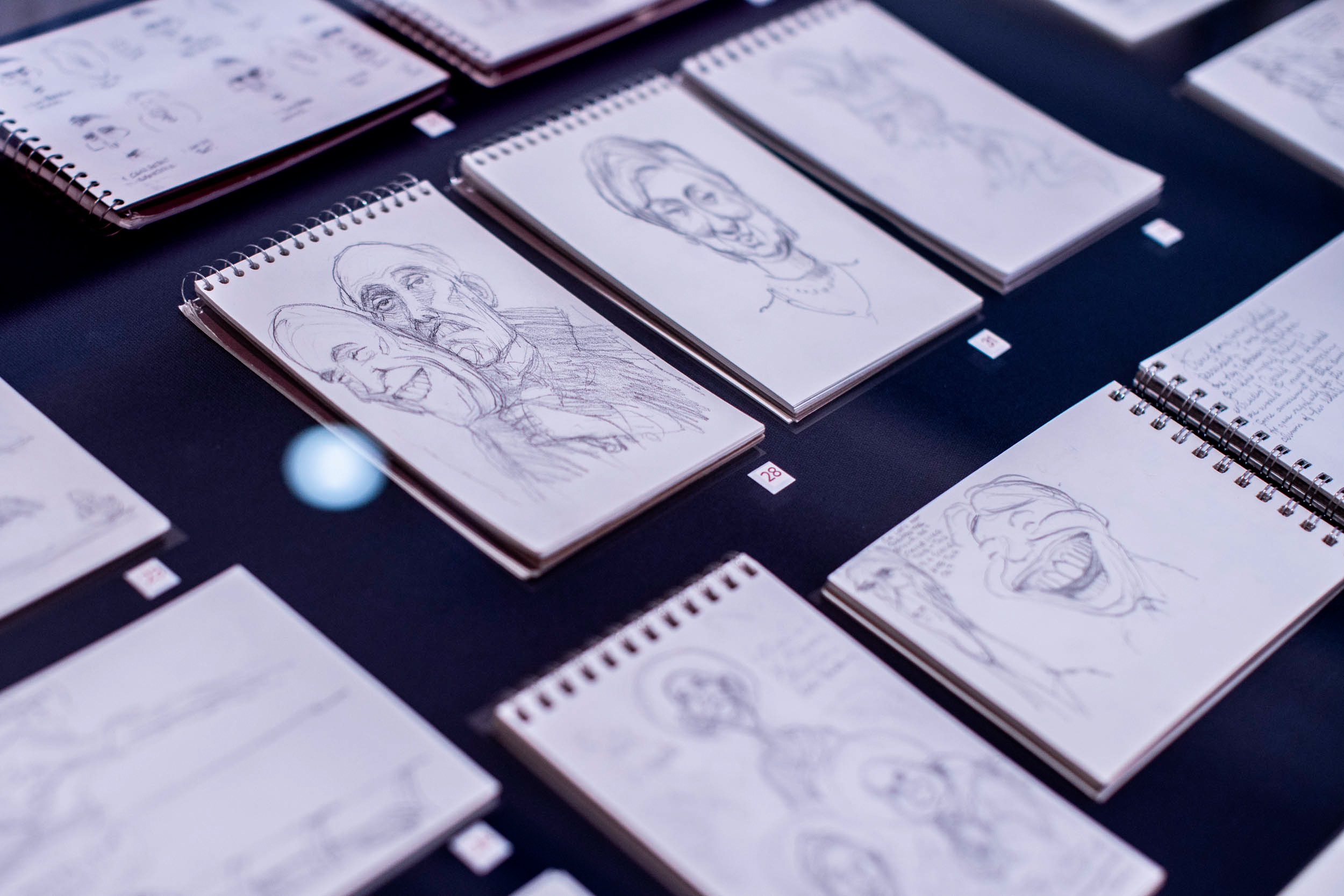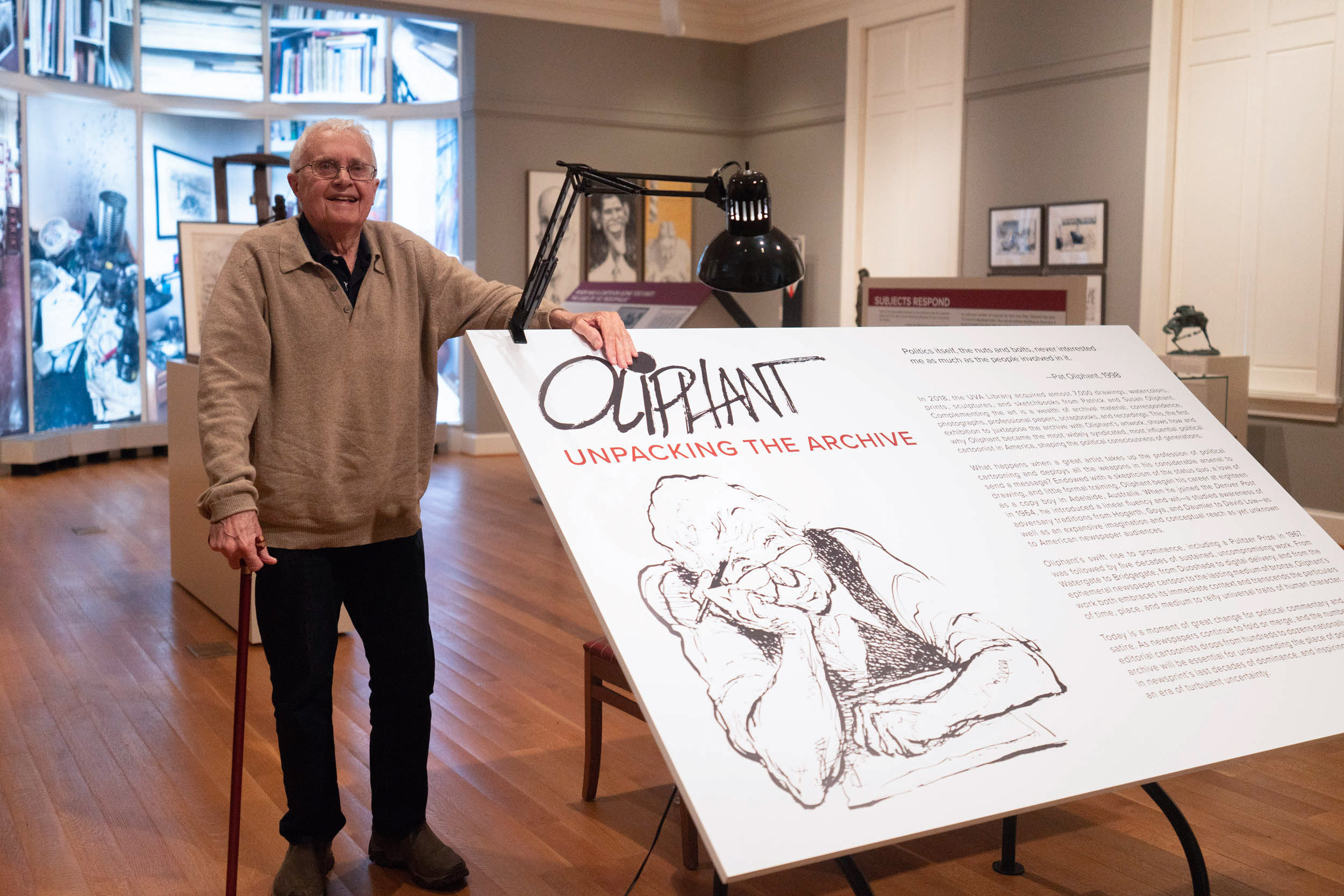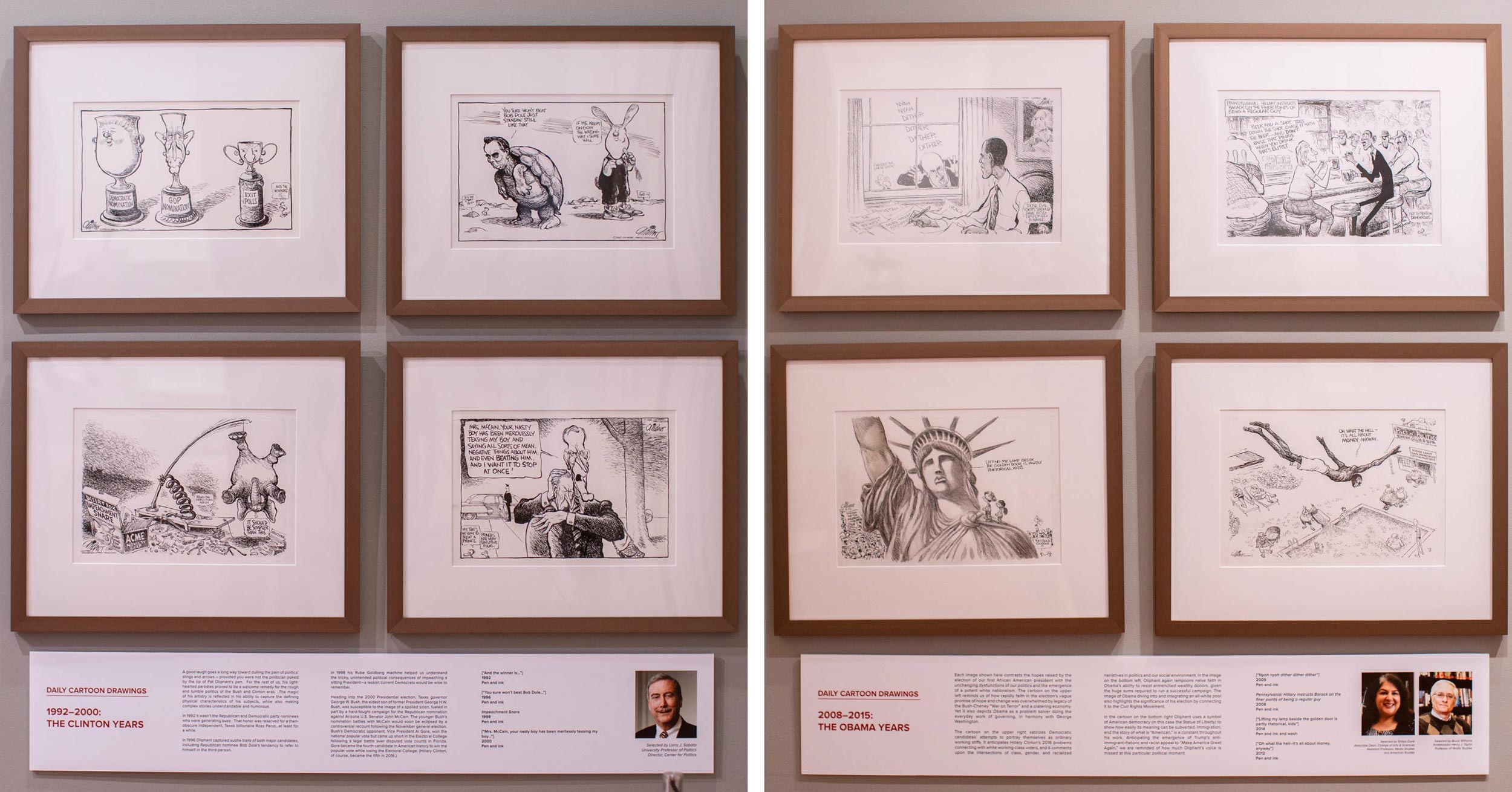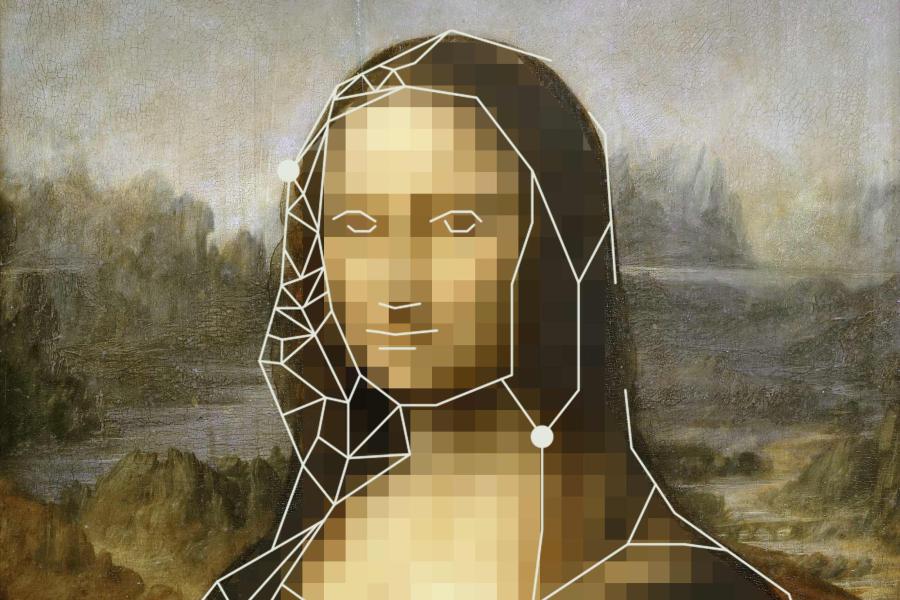From a watercolor of President H. W. Bush depicted as Mary Poppins to President Barack Obama drawn and sculpted as an Easter Island statue, visitors see the range of political cartoonist Patrick Oliphant’s work in the first tour of his voluminous archive in the University of Virginia’s Albert and Shirley Small Special Collections Library.
Last year, Oliphant donated almost 7,000 drawings, watercolors, prints, sculptures and sketchbooks to the UVA Library. Complementing his exquisite art is a wealth of archival material: some of the scrapbooks in which he began his work every morning, plus correspondence, photographs, professional papers and recordings.
The exhibition, “Oliphant: Unpacking the Archive,” opened this week and will remain on display in the Harrison/Small building’s main gallery until May 30.
